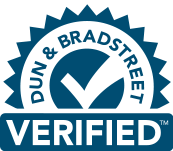What is a jig and a fixture?
Jigs and fixtures are two phrases we frequently hear combined, but it’s worth wondering, what exactly are jigs and fittings?
Jigs are special tools that are used to guide or regulate the motion or mobility of another tool. It can assist to expedite the production of a component since it avoids any unexpected activity on the part because it proceeds on a predetermined route, which prevents mistakes.
A fixture, on the other hand, is a device that holds an item in a permanent position, alignment, or location. Because the object in question is immobile, the industrial process may be mechanised. The said part can be positioned on an assembly line and any machine can do the task.
Both tools have a multitude of uses in a variety of disciplines. However, the most prevalent industries in which jigs and fixtures are found are the automotive and aerospace industries.
Jigs and Fixtures: Why are they Important?
1. Enhances Productivity
Because both instruments either assist a worker or hold a part for a machine, less time is spent inspecting, reconfiguring, or even gauging and labelling a part. It simplifies the whole manufacturing process, allowing the newly obtained time to be used simply producing more of what is required. Fixtures in an assembly line become crucial in terms of how much they increase production by allowing for more automation.
- Quality control and safety
Because the jig or fixture is standardised and repeatable, every product produced using one or the other should be reliable and devoid of manufacturing defects. This also reduces the time required to verify for quality and offers a safer atmosphere for labourers because the guessing is eliminated.
- Minimum Skill Requirements
Because a jig guides a worker when making a component, the worker does not need substantial knowledge or ability that comes with free-handing a part. A worker’s task does not need any measures, readjusting, or difficult operations. A fixture may not even require any human interaction, thus, significantly simplifying matters.
- Personalization and reusability
Depending on how a jig or fixture is constructed, the tool might be convertible or dismantlable, making moving from constructing one item to another as simple as possible. Once a jig or fixture is designed, it may be quickly changed if it breaks and adjusted to meet the demands of the work. By including 3D printing into the mix, jigs and fixtures can be built even quicker and with whatever material is required for maximum efficiency.
- Cost-cutting measures
Because jigs and fixtures solve several of the issues we’ve mentioned above, they save a manufacturer a tonne of time and money wherever a part is in the process. Workers, both experienced and unskilled, can work on a part without fear of repercussions or the costs associated with workplace accidents. Parts made with jigs or fixtures save money on materials since there are fewer errors made during the production process. The parts are of constant quality, which reduces QA costs and reduces development time/cycles.
Jigs and Fixtures in conjunction with Additive Manufacturing Transform Everything
Jigs and fittings have already had a large influence on a variety of sectors. It is perhaps one of the most important phases in improving the overall efficiency of the manufacturing process. The majority of the items you come into contact with on a daily basis are made using jigs or fixtures. Manufacturers who have incorporated 3D printing into their jigs and fixture design services will experience even bigger improvements in the areas we described above.
This convergence of breakthrough technologies will only make production faster, more efficient, and more inexpensive to the common customer.
 +91-120-4736400
+91-120-4736400 info@sphinxworldbiz.com
info@sphinxworldbiz.com
















